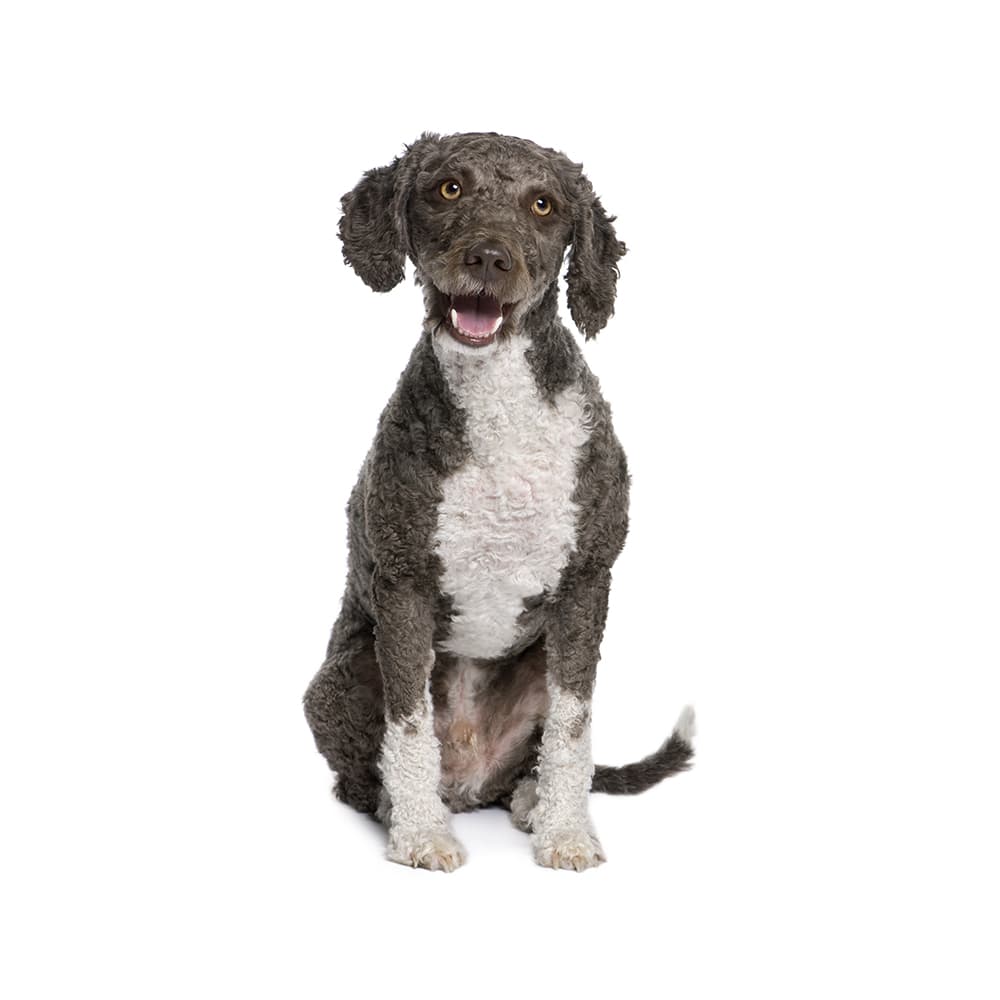Discover your dog's connection to this breed and 200+ others


Discover your dog's connection to this breed and 200+ others



The Spanish Water Dog, or Perro de Agua Español, originates from the Iberian Peninsula. The breed's history is not definitively known, but it's believed to have ancient roots, potentially dating back over a thousand years. It was traditionally used by Spanish shepherds as a versatile farm dog, capable of herding, hunting, and even assisting with fishing. Throughout the 20th century, the breed was at risk of extinction, but it was revived through concerted efforts by enthusiasts in the 1970s.
Spanish Water Dogs are generally healthy, but like any breed, they are prone to certain health conditions. These include hip dysplasia, progressive retinal atrophy, hypothyroidism, and exercise-induced collapse. They can also be susceptible to degenerative myelopathy, progressive rod-cone degeneration, and neuroaxonal dystrophy (NAD).
Spanish Water Dogs are intelligent, active, and hardworking. They are often eager to please and quick to learn, which makes them excellent working dogs and good candidates for obedience and agility training. They can be reserved with strangers, but are generally good with children and other pets if they are socialized properly from a young age. The breed has a strong herding instinct and may try to herd other animals or even people.
A canine genetic lineage is a group of individuals or entire breeds that descended from common ancestors predating modern breed formation. Often these lineages are associated with a ‘type’ of dog with a unique historical working role and associated behaviors (e.g., herding, scent hunting, etc.).
The Pointer-Spaniel lineage encompasses both pointer and spaniel breeds. They were both bred for their specialized hunting abilities in Europe. Pointers locate game and freeze in a stance, called “pointing”, to indicate to their hunter that birds are close by. Spaniels were bred to find game in underbrush and retrieve it. Both pointer and spaniel breeds were bred to enhance their strong senses, trainability, and endurance as these are advantageous in a hunting partner. Spaniels and pointers are known for their strong work ethic, ability to work closely with humans and agility. These dogs’ ability to work closely with their hunters makes them an asset during a hunt because they follow direction well and know how their hunters want them to proceed.
Example breeds with ancestry from this lineage include English Cocker Spaniel, Irish Red Setter, and German Shorthaired Pointer.
The Spanish Water Dog is a versatile worker. It has been used not only for herding but also as a search and rescue dog and in water sports.
The breed is known in its native land as the "dog that does everything," reflecting its multifaceted working capabilities.
The Spanish Water Dog's coat can naturally form into cords when it grows out, giving it a distinctive look similar to that of a Puli or Komondor.
In 1985, the breed was officially recognized by the Real Sociedad Canina de España (Royal Canine Society of Spain), and later by international organizations such as the Fédération Cynologique Internationale (FCI) and the United Kennel Club (UKC). The American Kennel Club (AKC) recognized it in 2015 in the Herding Group.
https://www.akc.org/dog-breeds/spanish-water-dog/
https://www.fci.be/en/nomenclature/SPANISH-WATER-DOG-336.html
https://www.ukcdogs.com/spanish-water-dog
https://www.purina.co.uk/find-a-pet/dog-breeds/spanish-water
https://vgl.ucdavis.edu/breed/spanish-water-dog
Recommended by top vets with decades of experience
21 breeds
64 genetic health markers
50 genetic trait markers
